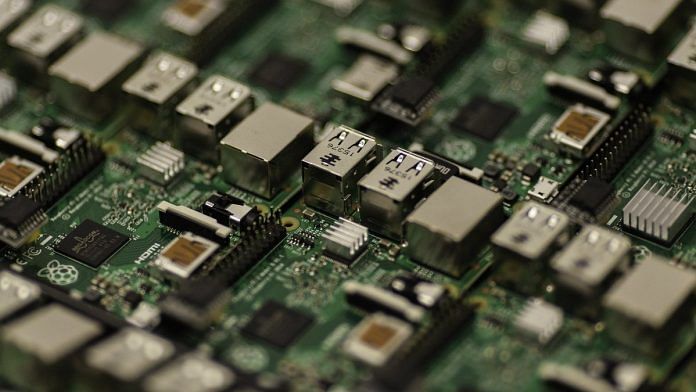New Delhi: A team of Swiss researchers has developed a ‘co-designed‘ microchip that has integrated cooling elements to tackle overheating of devices.
A microchip is a very small piece of silicon inside a computer that has a set of electronic circuits on it and can hold large quantities of information or perform logical operations. There are several types of microchips such as microprocessors, memory chips, analog and digital chips.
A fairly tiny unit, microchips today power nearly every electronic device in our lives, ranging from cellphones to satellites. But their overheating has become one of the biggest issues for chip manufacturers and companies integrating these units into everyday devices.
The new co-designed chip has “buried coolant channels (which) are integrated across the device, allowing for even heat dissipation and management”.
Cooling methods that were proposed in the past involved a two-pronged approach — “involving designing the cooling elements separately from the electronic elements, and then combining after the initial fabrication process”.
While a similar method of “direct-to-electronic microfluidic cooling” has been developed earlier, Tiwei Wei — one of the Swiss researchers — argued that issues with cost and heat-related stress in those models limit their efficiency gains.
The team created the chip’s embedded cooling system by “etching and widening coolant channels” directly into the chip’s underlying layer. They then followed it up by sealing off these channels using copper and building the chip’s other electronic components directly on top, instead of building it separately and combining the components later.
Embedding cooling directly into a microchip is a sustainable and cost-effective approach. Completely removing the need for external heat sinks — components used to direct generated heat away from a circuit or chip — enables the production of more compact electronic devices, such as power converters.
Also read: Apple’s iPhone, iPad designers develop special face masks for employees
Overheating of microchips
Overheating of microchips has been a problem because it goes against what is known as the Moore’s microchip law. The ‘law’ took its name from a prediction made by Gordon E. Moore, co-founder of Intel, in a 1965 paper.
It states that “the number of transistors on a microchip doubles every two years” and the cost of computers is halved. The law also states that “we can expect the speed and capability of our computers to increase every couple of years…”.
But if the issue of overheating is not tackled in a timely and effective manner, repeated miniaturisation of microchips (meaning more components on a circuit) will pose a hurdle to computing.
According to a report, US data centres are slated to consume 73 billion kilowatt-hours of energy in 2020. Each kilowatt hour of energy requires two gallons of water to cool. This means, for 2020 alone, US will need 2,20,000 Olympic-sized pools filled with water to bring down overheating in the microchip-reliant data processors.
Structural concerns of new chip
The new chip design is likely to bring computing into a new age of innovation that can efficiently tackle overheating and yield improvements in efficiency.
While the new method is believed to have a cooling power 50 times greater than conventional models, Wei also addressed some issues associated with the chip.
Noting structural issues of the “material used for the substrate surface (on which the chip is built) and an adhesive used to connect the coolant channels during fabrication”, Wei said concerns remain about their effectiveness in varying temperatures and environments.
Also read: Northrop Grumman names US spacecraft after late astronaut Kalpana Chawla



